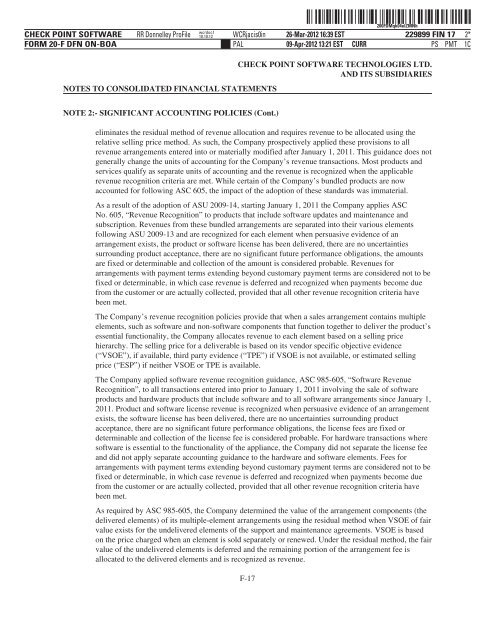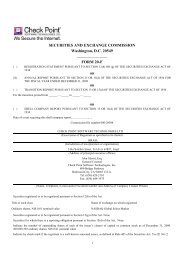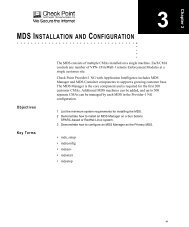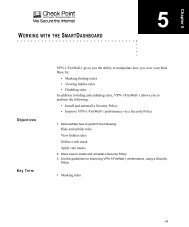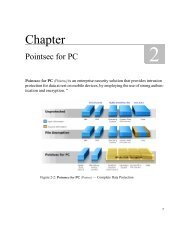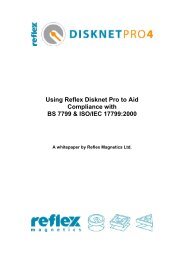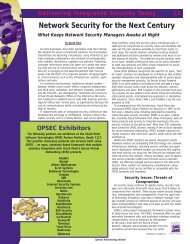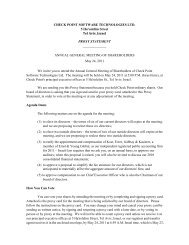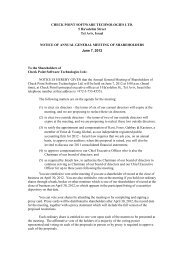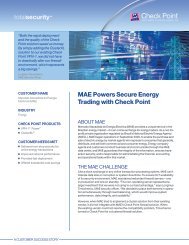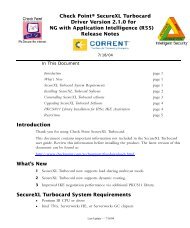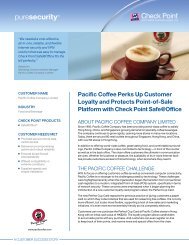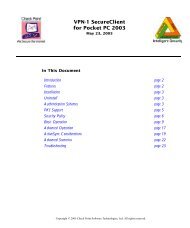printmgr file
printmgr file
printmgr file
Create successful ePaper yourself
Turn your PDF publications into a flip-book with our unique Google optimized e-Paper software.
CHECK POINT SOFTWARE<br />
FORM 20-F DFN ON-BOA<br />
ˆ200FDMqk04elZMNh"Š<br />
200FDMqk04elZMNh<br />
RR Donnelley ProFile wcrdoc1<br />
10.10.12 WCRjacis0in 26-Mar-2012 16:39 EST<br />
229899 FIN 17 2*<br />
PAL<br />
09-Apr-2012 13:21 EST CURR<br />
PS PMT 1C<br />
CHECK POINT SOFTWARE TECHNOLOGIES LTD.<br />
AND ITS SUBSIDIARIES<br />
NOTES TO CONSOLIDATED FINANCIAL STATEMENTS<br />
NOTE 2:- SIGNIFICANT ACCOUNTING POLICIES (Cont.)<br />
eliminates the residual method of revenue allocation and requires revenue to be allocated using the<br />
relative selling price method. As such, the Company prospectively applied these provisions to all<br />
revenue arrangements entered into or materially modified after January 1, 2011. This guidance does not<br />
generally change the units of accounting for the Company’s revenue transactions. Most products and<br />
services qualify as separate units of accounting and the revenue is recognized when the applicable<br />
revenue recognition criteria are met. While certain of the Company’s bundled products are now<br />
accounted for following ASC 605, the impact of the adoption of these standards was immaterial.<br />
As a result of the adoption of ASU 2009-14, starting January 1, 2011 the Company applies ASC<br />
No. 605, “Revenue Recognition” to products that include software updates and maintenance and<br />
subscription. Revenues from these bundled arrangements are separated into their various elements<br />
following ASU 2009-13 and are recognized for each element when persuasive evidence of an<br />
arrangement exists, the product or software license has been delivered, there are no uncertainties<br />
surrounding product acceptance, there are no significant future performance obligations, the amounts<br />
are fixed or determinable and collection of the amount is considered probable. Revenues for<br />
arrangements with payment terms extending beyond customary payment terms are considered not to be<br />
fixed or determinable, in which case revenue is deferred and recognized when payments become due<br />
from the customer or are actually collected, provided that all other revenue recognition criteria have<br />
been met.<br />
The Company’s revenue recognition policies provide that when a sales arrangement contains multiple<br />
elements, such as software and non-software components that function together to deliver the product’s<br />
essential functionality, the Company allocates revenue to each element based on a selling price<br />
hierarchy. The selling price for a deliverable is based on its vendor specific objective evidence<br />
(“VSOE”), if available, third party evidence (“TPE”) if VSOE is not available, or estimated selling<br />
price (“ESP”) if neither VSOE or TPE is available.<br />
The Company applied software revenue recognition guidance, ASC 985-605, “Software Revenue<br />
Recognition”, to all transactions entered into prior to January 1, 2011 involving the sale of software<br />
products and hardware products that include software and to all software arrangements since January 1,<br />
2011. Product and software license revenue is recognized when persuasive evidence of an arrangement<br />
exists, the software license has been delivered, there are no uncertainties surrounding product<br />
acceptance, there are no significant future performance obligations, the license fees are fixed or<br />
determinable and collection of the license fee is considered probable. For hardware transactions where<br />
software is essential to the functionality of the appliance, the Company did not separate the license fee<br />
and did not apply separate accounting guidance to the hardware and software elements. Fees for<br />
arrangements with payment terms extending beyond customary payment terms are considered not to be<br />
fixed or determinable, in which case revenue is deferred and recognized when payments become due<br />
from the customer or are actually collected, provided that all other revenue recognition criteria have<br />
been met.<br />
As required by ASC 985-605, the Company determined the value of the arrangement components (the<br />
delivered elements) of its multiple-element arrangements using the residual method when VSOE of fair<br />
value exists for the undelivered elements of the support and maintenance agreements. VSOE is based<br />
on the price charged when an element is sold separately or renewed. Under the residual method, the fair<br />
value of the undelivered elements is deferred and the remaining portion of the arrangement fee is<br />
allocated to the delivered elements and is recognized as revenue.<br />
F-17


